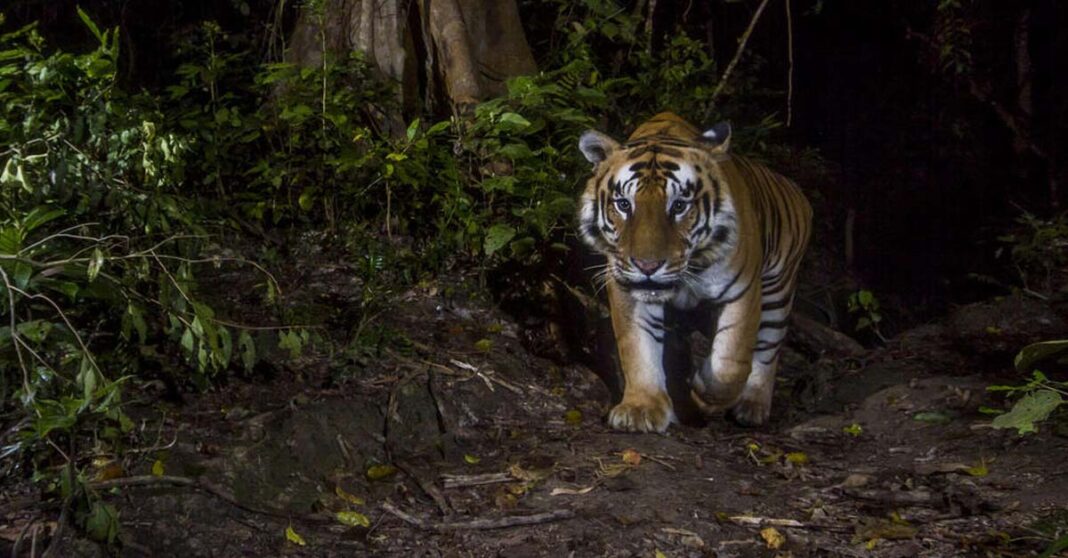In the Year of the Tiger, it may be time to bring the iconic big cat back from the brink of extinction in Laos.
Without recorded evidence of tigers in the forests of Laos for almost a decade, a new report from World Wide Fund for Nature (WWF) states that the animal could well be extinct.
WWF’s new Impact on Tiger Recovery 2010-2022 Report emphasizes the need for urgent action in tiger recovery, particularly in Laos where tigers could well have disappeared.
Laos is one of 13 countries in the world where endangered tigers remain in the wild, and as recently as the early 1980’s, tigers reportedly roamed the outskirts of Vientiane where the National University of Laos now stands.
However, despite extensive searches and the use of wildlife cameras, no tigers have been spotted anywhere in Laos for almost ten years.
Despite large forested areas and suitable habitat, the tigers’ prey and tigers themselves have been hunted to the brink of extinction.
With ample habitat, however, comes ample opportunity, according to WWF Laos, with hope of rewilding – hope to see tigers roaming the forests of Laos once more.
In concomitance to the celebration of the Lunar Year of the Tiger, 2022, WWF-Laos launched the new 5-Year Conservation Programme which includes the protection and recovery of the national and global priority species, including the recovery of tigers in Laos.
Through partnerships with many conservation organizations and under the leadership of the Government of Laos, WWF says it believes that recovering the tiger population in Laos is possible.
Rewilding Benefits Both the Ecosystem and Human Populations
Rewilding tigers not only benefits Laos’s forests and wildlife, but also the people of Laos. As top predators, wild tigers play an important role in maintaining the harmony of the planet’s ecosystems. By preying on herbivores, tigers help to keep the balance between the prey animals and the forest vegetation which they feed upon.
There is progress worth celebrating on tiger recovery, but it is vital to acknowledge that these gains are fragile and have not been uniform across Asia’s subregions with perilous declines in Malaysia and tigers now likely extinct in Cambodia, Laos and Vietnam.
While the global estimate for wild tigers may be on the rise, their range has continued to decline and tigers today are restricted to less than 5 per cent of their historic range.
The pivotal moment for the future of tiger conservation will be the 2nd Global Tiger Summit on 5 September in Vladivostock, Russia.
Heads of states and ministers from tiger range countries will gather with other world leaders, and intergovernmental bodies, NGOs, and conservation experts, to determine the next phase of the Global Tiger Recovery Plan.
It will play a critical role in bringing the international community together, and reshaping the future of tiger conservation with a framework that is tiger-friendly, people-centred, and embedded within the global and national economic agenda. There is also an opportunity to address range decline with an ambitious new goal for range expansion.
WWF will continue to support core tiger conservation activities including the effective management of protected areas, disruption of the illegal wildlife trade, and demand reduction for tigers and their parts and products.
Beyond 2022, WWF will work with communities living in tiger landscapes to build connectivity, promote tiger reintroduction in the former range, reduce human-wildlife conflict and further strengthen transboundary conservation efforts.
The organization will also ensure alignment with broader priorities of the environmental agenda, including climate change adaptation and mitigation, land degradation, and ecosystem restoration and rewilding.
—
Join our Telegram channel to receive our regular news updates.



